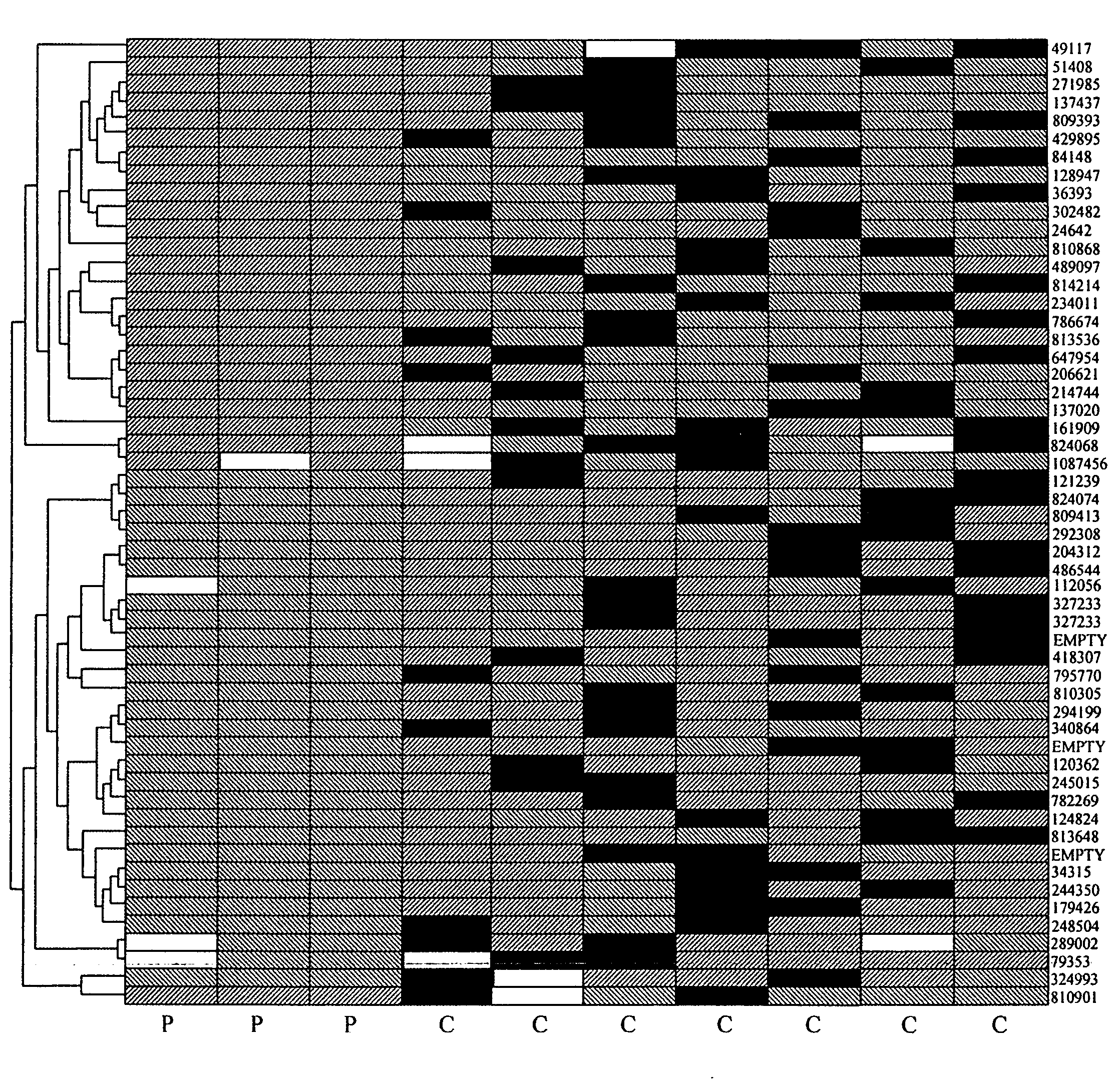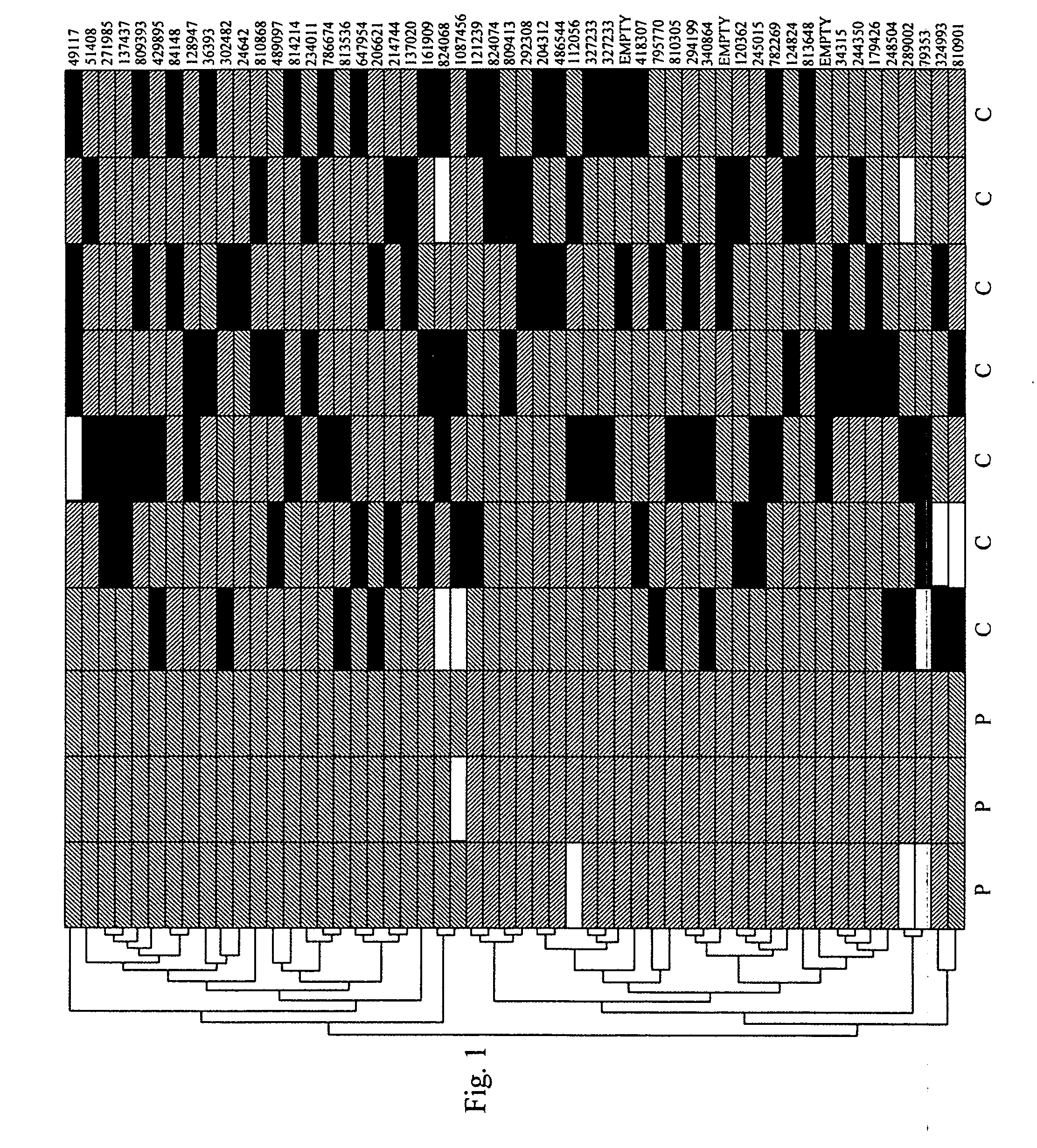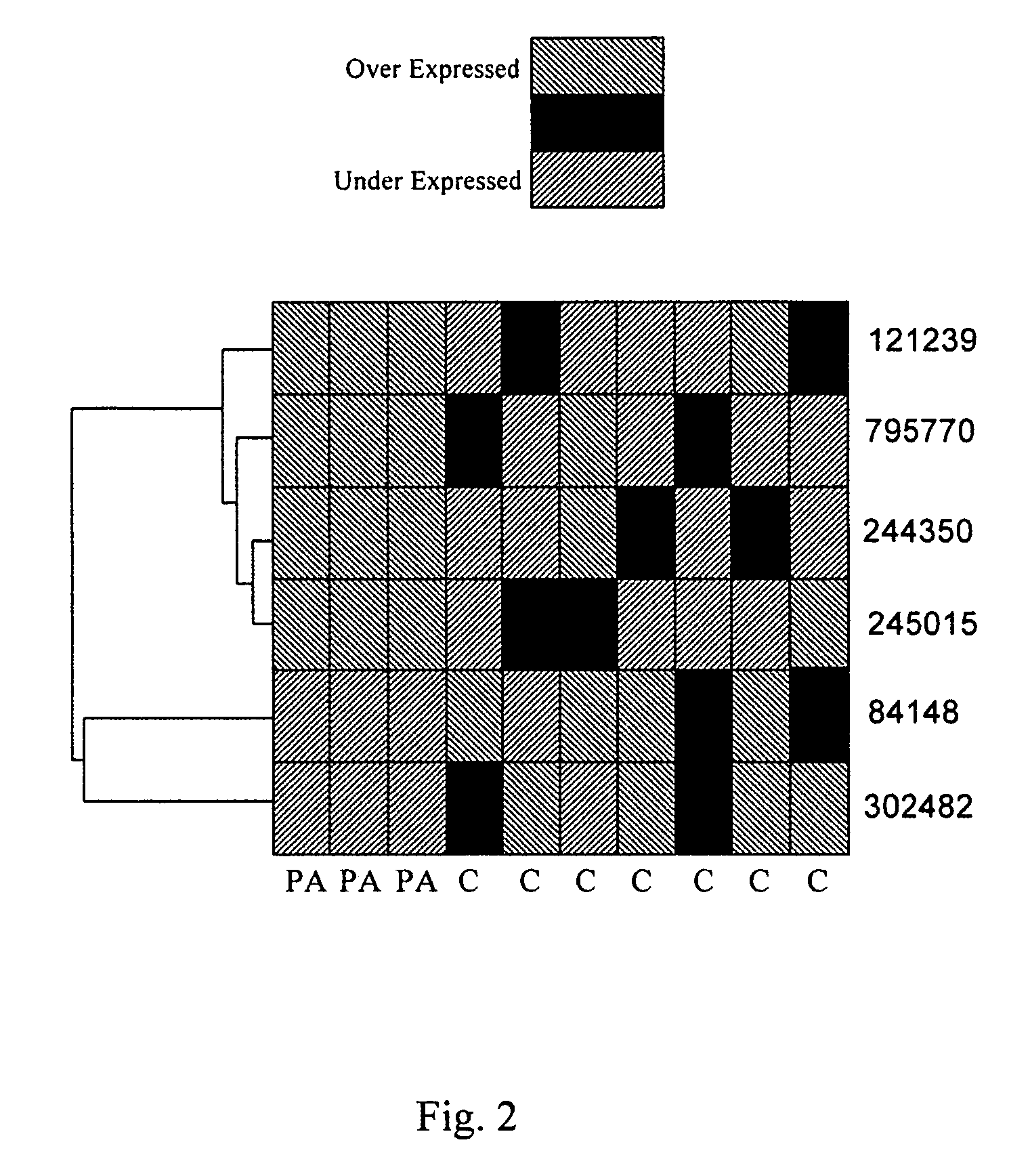Method for early detection of various cancers and gastrointestinal disease and monitoring of transplanted organs
a technology for gastrointestinal diseases and early detection of cancers, applied in the field of diagnosis and appraisal of treatment of disease conditions, can solve problems such as errors in the determination of individual gene expression characteristics
- Summary
- Abstract
- Description
- Claims
- Application Information
AI Technical Summary
Benefits of technology
Problems solved by technology
Method used
Image
Examples
Embodiment Construction
[0026]The invention, in part, involves obtaining gene expression characteristics of the gene system of monocyte-lymphocytes of the peripheral blood from a body or patient to be tested. This usually includes obtaining peripheral blood from the body or patient to be tested, separating or isolating the monocyte-lymphocytes from the blood, processing the monocyte-lymphocytes to allow determination of gene expression characteristics of the genes, and determining the gene expression characteristics of the genes. In a preferred method of obtaining and processing the monocyte-lymphocytes, a peripheral blood sample is obtained from the patient in the usual manner of obtaining venous blood from a peripheral vein, such as the anti-cubital vein of the arm. Usually 16 ml in two 8 ml tubes is drawn into sterile RNase free vacuum tubes with a Ficoll type gradient and heparin. (Such as the BD Vacutainer CPT tubes with heparin.) Although not the preferred method, other anticoagulants such as potassi...
PUM
| Property | Measurement | Unit |
|---|---|---|
| Time | aaaaa | aaaaa |
| Gene expression profile | aaaaa | aaaaa |
Abstract
Description
Claims
Application Information
 Login to View More
Login to View More - R&D
- Intellectual Property
- Life Sciences
- Materials
- Tech Scout
- Unparalleled Data Quality
- Higher Quality Content
- 60% Fewer Hallucinations
Browse by: Latest US Patents, China's latest patents, Technical Efficacy Thesaurus, Application Domain, Technology Topic, Popular Technical Reports.
© 2025 PatSnap. All rights reserved.Legal|Privacy policy|Modern Slavery Act Transparency Statement|Sitemap|About US| Contact US: help@patsnap.com



